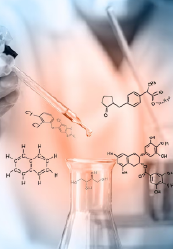Growing Importance of Soil Treatment Market
Soil, an essential natural resource, plays a key role in maintaining soil-plant growth and ecological balance. However, factors like environmental pollution have been degrading the quality of soil worldwide. To combat this effect on soil and protect our planet’s future, soil treatment has become an important aspect. This blog unveils the importance of soil treatment, various methods used for this process, and soil treatment market value and future growth contributing factors.
Understanding Soil Treatment and Its Importance
Soil treatment is the process of restoring the acid-base balance by removing pollutants from the soil. This process is essential to safeguard both the environment and the health of the people. It revitalizes and purifies the soil. In simpler terms, we can say that the aim of this process is to neutralize the nature of the soil, which is polluted by artificial chemicals and other activities performed by humans.
Soil treatment is used to make contaminated soil reusable for agriculture and other purposes. These contaminations are usually caused by various chemicals such as petroleum hydrocarbons, lead, pesticides, and other metals, as well as wastes such as alkali, oil, or some other non-degradable material. Factors like leaking in underground storage tanks and several environmental issues can also lead to contamination of the soil.
Market Size and Dynamics
According to Polaris Market Research, the global soil treatment market was valued at USD 41.96 billion in 2022 and is expected to reach USD 72.15 billion at a CAGR of 5.71% during the forecast period.
Soil Treatment Types Can Be Classified as:
- Organic amendments (compost, crop residue, animal dung, and sewage sludge, among others)
- pH adjusters (including gypsum, agricultural lime, and others)
- Soil protection (pest and weed control)
Soil Treatment Technologies Can Be Classified as:
- Biological treatment: This approach of removing heavy metal and hydrocarbon contamination from soils is the most environmentally friendly. It consists of techniques like bio-sparging, phytoremediation, bioventing, and bioremediation.
- Physicochemical treatment: This includes chemical oxygenation, fracturing, soil vapor extraction (SVE), electric resistance heating (ERH), solidification, and stabilization.
- Thermal treatment: It is a remediation technique for clearing dirty or contaminated soils. This technique can only be applied to volatile contaminants because it uses heat to vaporize the impurities.
Rapid urbanization and industrialization are leading to an increase in contaminated soil, which is driving the soil treatment market demand. The escalating regulations regarding chemical fertilizers and pesticides have fueled the adoption of eco-friendly soil treatments like organic amendments and biological treatments to curb environmental pollution.
To Get Insights on the Soil Treatment Market: Request for a Sample Report
The Future Growth of Soil Treatment
Market demand in APAC is expected to show higher growth throughout the forecast period as the region has the world's largest population. Rapid urbanization in the area is contributing to a rise in polluted soil from industrial and construction activity. The need for soil treatments to clean up contaminated soil is being driven by this. In the Asia Pacific region, the rising levels of organic and inorganic pollutants in the soil in China are of significant concern for the environment and for human health. As a result, the soil treatment market growth is increasing in the country.


